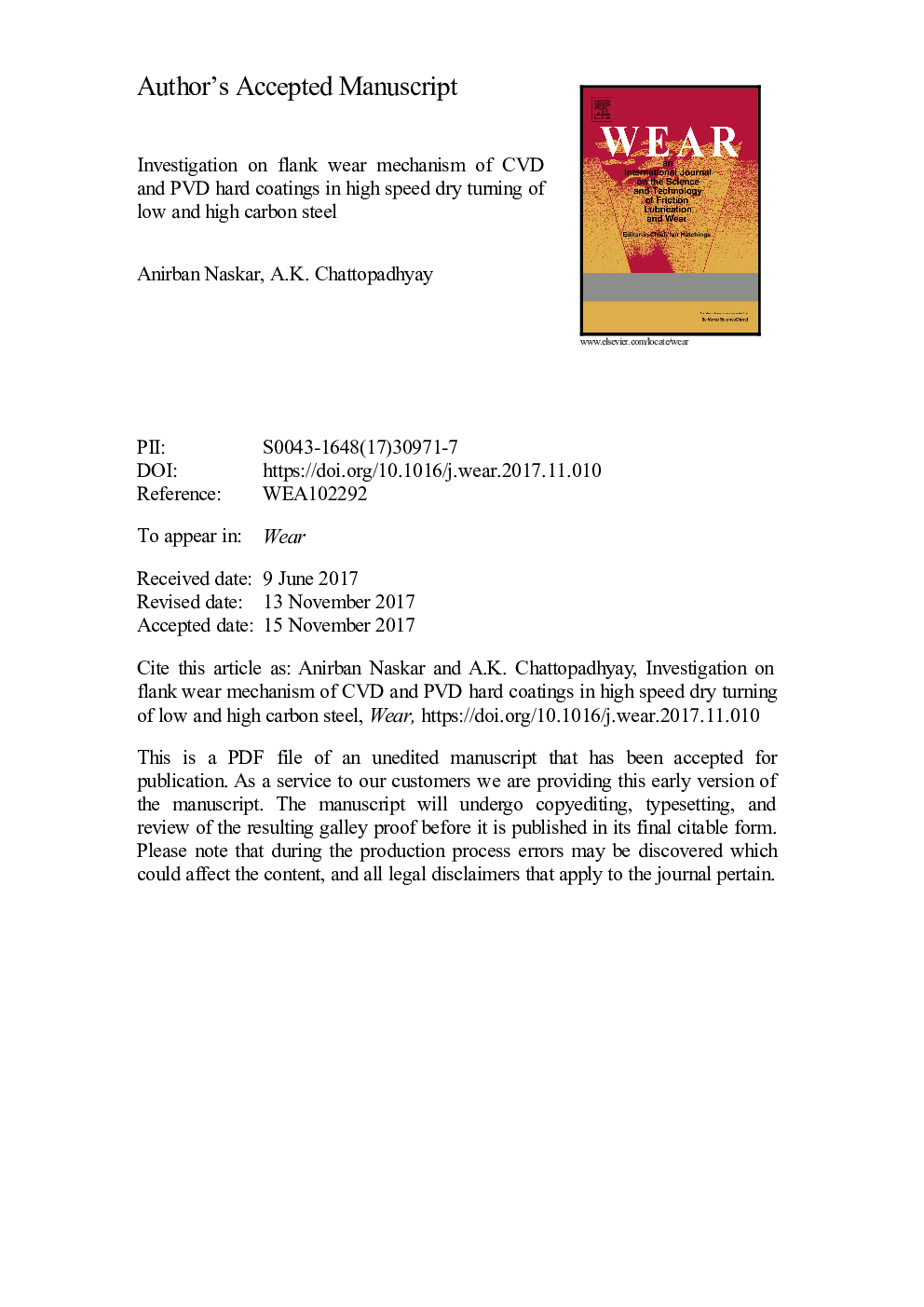| Article ID | Journal | Published Year | Pages | File Type |
|---|---|---|---|---|
| 7004035 | Wear | 2018 | 26 Pages |
Abstract
High speed dry machining is the key manufacturing technology for higher productivity and for preserving green environment. To successfully implement this technology it is essential to understand the wear mechanism of the cutting tool engaged in high speed dry machining. Understanding of flank wear mechanism helps to design new coating material that improves the tool life. Among various types of wear taking place on cutting tool, flank wear is the most crucial one as it limits the service life of the tool. Therefore, to accomplish this goal two work materials, C20 and C80 steel were turned at 300Â m/min and 600Â m/min with CVD Al2O3/TiC, TiCN/TiC bilayer coated and PVD TiAlN single layer coated inserts and flank wear was studied. As the intention was to study only the wear mechanism of the top Al2O3, TiCN and TiAlN coatings, the machining was done for 15Â s only to avoid any exposure of the underlayer coating or substrate. It was found that, the flank wear mechanism substantially differed for different coatings. Plastic deformation induced necking and ridge formation, grain spallation induced ridge and groove formation, dissolution-diffusion and abrasion was found to be the responsible flank wear mechanism depending on the machining environments (cutting speed and work material) and coatings. A new flank wear model was presented to explain the groove and ridge formation on Al2O3 coating.
Related Topics
Physical Sciences and Engineering
Chemical Engineering
Colloid and Surface Chemistry
Authors
Anirban Naskar, A.K. Chattopadhyay,
